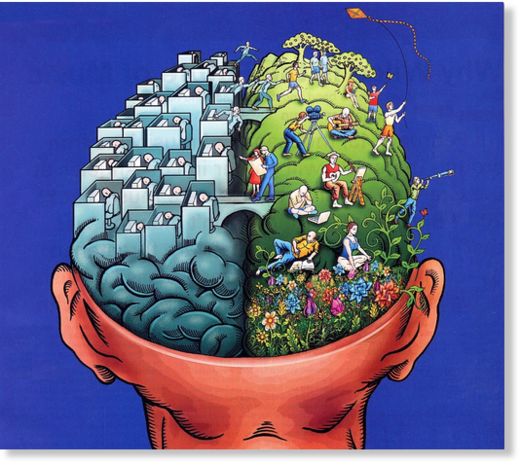
© Unknown
When a friend tells you she had a rough day, do you feel sandpaper under your fingers? The brain may be replaying sensory experiences to help understand common metaphors, new research suggests.
Linguists and psychologists have debated how much the parts of the brain that mediate direct sensory experience are involved in understanding metaphors. George Lakoff and Mark Johnson, in their landmark work 'Metaphors we live by', pointed out that our daily language is full of metaphors, some of which are so familiar (like "rough day") that they may not seem especially novel or striking. They argued that metaphor comprehension is grounded in our sensory and motor experiences.
New brain imaging research reveals that a region of the brain important for sensing texture through touch, the parietal operculum, is also activated when someone listens to a sentence with a textural metaphor. The same region is not activated when a similar sentence expressing the meaning of the metaphor is heard.
The results were published online this week in the journal
Brain & Language.
"We see that metaphors are engaging the areas of the cerebral cortex involved in sensory responses even though the metaphors are quite familiar," says senior author Krish Sathian, MD, PhD, professor of neurology, rehabilitation medicine and psychology at Emory University. "This result illustrates how we draw upon sensory experiences to achieve understanding of metaphorical language."
Sathian is also medical director of the Center for Systems Imaging at Emory University School of Medicine and director of the Rehabilitation R&D Center of Excellence at the Atlanta Veterans Affairs Medical Center.
Seven college students who volunteered for the study were asked to listen to sentences containing textural metaphors as well as sentences that were matched for meaning and structure, and to press a button as soon as they understood each sentence. Blood flow in their brains was monitored by functional magnetic resonance imaging. On average, response to a sentence containing a metaphor took slightly longer (0.84 vs 0.63 seconds).
